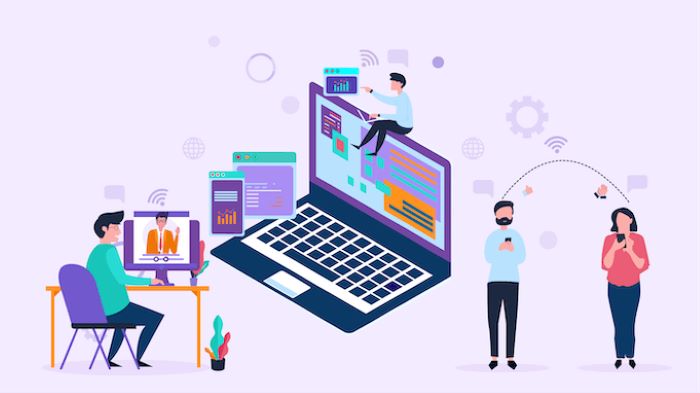Quality checking has always been very important for business success. Businesses use it to keep customer trust and do great work. Technology changes a lot. This has changed how products are checked. Now we use computers, robots, drones and blockchain technology for checking. These new technologies test products in different ways. They are changing how quality checks are done. In the future, more technology will be used for quality checks.
The Dawn of Digital Inspection Tools
New ways of checking things online have become important for quality control. Digital tools use sensors and smart programs. They can look at products and machines and give fast, exact results. For example, 3D scanning can take a whole picture of something. It finds glitches and measures sizes very well. Another new idea is making a changing picture of real things on computers. This “digital twin” watches physical goods carefully. It finds problems easily and tests fixes without cost. So digital tools, using great tech, are changing how quality is checked. They lead to a more exact and better future.
The Rise of Automated Inspection Systems
The world of quality control has changed a lot because machines now do most of the work. Robots use smart technology to check things very fast and with few mistakes. One important tool is Automated Optical Inspection (AOI) systems. These advanced machines can quickly look at electronic products and find any problems or faults. This would take a long time and have more errors if people did it. Also, machine vision systems help a lot with checking. They use cameras and complex picture techniques to watch products on fast assembly lines. This makes sure everything looks the same and meets quality rules. These automatic checking systems make the process faster and more correct. They also greatly help make work more effective and productive.
Harnessing the Power of Artificial Intelligence
AI, because it can do some of the same things as people, is very helpful for checking how good products are. AI is great at looking at lots of information and seeing patterns in the data. It can find unusual things, and predict how good quality will be based on the data. This predictive analysis using AI is much less likely that products will be defective and helps quality control a lot.
Machine Learning (ML), an AI offshoot, makes the process better by using experience to develop and improve inspection steps. As ML algorithms see more data, they learn and change, continuously improving their defect-finding and guessing abilities. This ongoing learning promotes an always-improving inspection process, making quality control more efficient and exact over time.
Machine learning helps computers see. Computers can now spot tiny problems that people or old machines may miss. This makes product checking much better. Computers learn to see defects just like humans. They get better over time at finding issues. Using artificial intelligence in testing leads to a precise, correct, and predictive way to inspect things. It sets a high standard for product quality.
The Impact of Blockchain on Quality Control
Blockchain technology can do more than cryptocurrencies. It helps with 3rd party inspection. This smart technology allows making a shared record of product details, test results, and inspection facts. This system improves openness and trust between all people involved in making and shipping things. Blockchain tracing makes following quality rules and laws easier. It also helps find fast where a product came from and what happens to it if any quality problems come. By keeping an unchangeable secure record of every step in making and checking products, blockchain technology creates a new way to control quality. It gives the highest accountability, tracing, and trust. This adds a new part to how much we trust inspection services and how sure we are of product quality.
The Advent of Drones for Inspection Services
Drones have become an important tool for inspections. They can inspect places that are hard for people to reach or unsafe. Drones have good cameras and sensors. They use these to check things like power lines, pipes, windmills, and big buildings. Drones can do these checks very quickly and safely. This lowers the risks of people getting hurt doing inspections. Drones also collect data. Clever computer programs then study this data. They find useful details to help understand things better. Together, drones and computer programs can now do inspections very well. Inspections are safer and faster, and see more now. People do not need to help as much. There is less chance people will get hurt, too.
The Role of the Internet of Things (IoT) in Quality Control
The Internet of Things (IoT) has brought big changes to quality control. A network of IoT devices works together to watch production in real time. They constantly gather and share important data. This helps see how the whole production system is working. It allows problems to be found fast so that fixes can happen quickly. This limits mistakes. IoT can also predict when maintenance is needed. This helps quality control improve over time instead of just reacting to issues. But when IoT joins with Artificial Intelligence (AI) and Machine Learning (ML), something special happens. These smart systems can spot and correct problems. They also learn from past issues. These self-fixing systems that teach themselves show a future. In the future, quality control is more than a process. It aims to get production closer to perfection all the time.
The Future of Quality Control
Looking ahead, how quality control services improve depends on putting cutting-edge technologies together into a smart, thoughtful, and helpful inspection system. With 5G and edge computing coming, sharing data and processing it will be much faster and easier. This leads to even more exact and predictive inspection services. It’s easy to imagine a future where AI, machine learning, the internet of things, drones, and blockchain technologies make a whole digital system for quality control. This system would see and fix possible quality problems before they happen. It would make sure products are excellent, and customers are satisfied. In the future, quality control will not just be a method but a thing that learns and makes itself better all the time, trying for perfection. This helpful technology would change quality control. It shows a promise to keep product quality and trust in the products and services of tomorrow.

